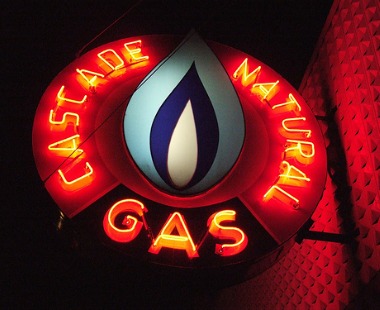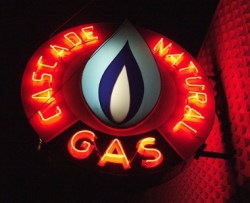Guys, thanks to fracking, we have so much natural gas. So much. Like, if you filled up party balloons with the natural gas America produces in a year, you’d have enough to fill your whole house, I assume.* Also: Do not smoke near that.
The glut of natural gas on the market has been a boon, of sorts, if only because it’s driving down carbon dioxide emissions. But those low, low prices, the result of domestic oversupply, are bad news for producers. So they’d like to ship the stuff overseas.
Last week, the government released a report compiled by NERA Economic Consulting on the feasibility of natural gas exports. As the Council on Foreign Relations summarizes:
The study reaffirms that allowing exports would be good for U.S. economic growth. No matter how NERA sets up its model — different assumptions about U.S. gas resources, domestic demand, or international markets — the U.S. economy as a whole benefits from allowing exports. This shouldn’t be a surprise: the fact that economies gain from allowing trade is pretty robust.
The negative headline from the report is that allowing exports would lower average real wage income. This happens despite little or no impact on nominal wages; it is due to higher natural gas prices, which imply slightly lower average real wage income.
(That second point, clarified: More exports means higher natural gas prices in the U.S. due to less domestic supply, which means we pay more for natural gas, which means less real wage income.)
But!
Despite these often-massive export volumes, NERA projects consistently limited natural gas price impacts. In only one scenario — higher than expected U.S. shale resources and massive international demand leading to very large exports — do prices rise by more than a dollar for a thousand cubic feet in the next decade. (They rise by $1.11 in that case.) Most results see an increase closer to fifty cents.
The Washington Post is excited about the prospect of exports, because free trade and so on. (Post Company employee Matt Yglesias is more skeptical.) The head of Shell’s U.S. arm thinks the president will OK an export plan that would ship 21 billion cubic feed of liquefied natural gas overseas every day — though this would require a big expansion of export facilities.
If you use ships. There is, however, an easier way.
* If you’re curious, in September, the country produced 2.4 million million cubic feet of natural gas. A party balloon holds about .5 cubic feet. So that’s 4.8 trillion party balloons. Per month. Probably too big for your house.





